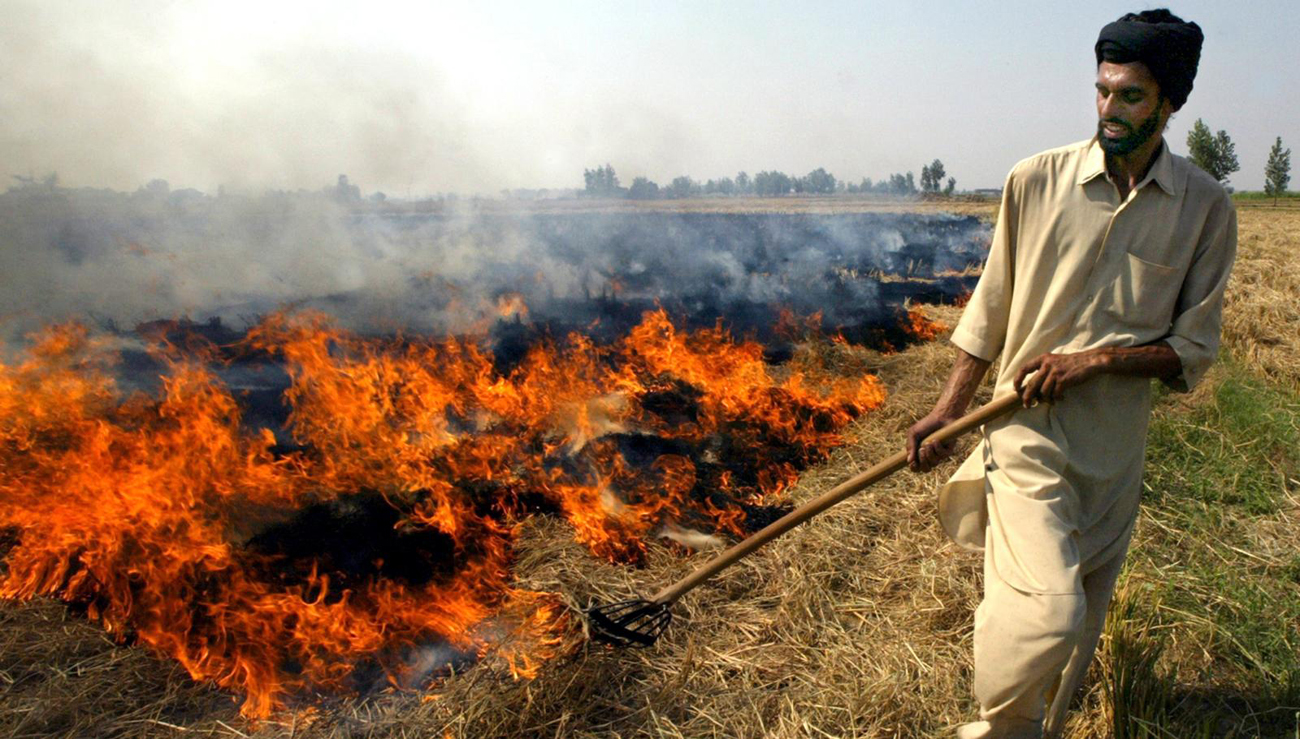
Stubble Burning in North-West India and its Impact on Health
Abstract:
Burning of crop residues released many pollutants, resulting in serious health hazards. This paper is an attempt to explore status of crop residues burning in Northwest India and its consequences on health in general and on child health in particular. An effort has also been made to find out the correlation between stubble burning and increasing incidence of acute respiratory infection (ARI) among children in Punjab. Finally an inventory of suggestions to curb this evil has also been prepared. Based on secondary sources, the data collected from various published studies, reports and NFHS, the present study found that residue burning resulted in the emission of greenhouse and various harmful gases. Such emission of harmful gases is many times higher than the standard level of gases as recommended by Central Pollution Control Board (CPCB). It has also been observed that the phenomenon of stubble burning is quite high in Punjab with comparison to other northwest Indian states resulting into increase in incidence of ARI among children.
Author(s):
DOI:
Keywords:
References:
Arbex M. et. al., (2004). Biomass burning and its effects on health. Journal Brasileiro de Pneumologia, 30(2), 1806–3756.
Binod P. et. al., (2009). Bioethanol production from rice straw: An Overview. Bioresource Technology. 101, 4767–4774.
Chandra R, et. al.,(2017). Energy Generation from paddy straw: An Analysis of Bioenergy Models. Akshay Urja, MNRE, Government of India. 22–27.
Gadde et. al. (2009). Rice straw as a renewable energy source in India, Thailand, and the Philippines: Overall Potential and Limitations for Energy Contribution and Greenhouse Gas Mitigation. Biomass bioenergy. 33, 1532–1546.
Gupta S. et. al.,(2017). Respiratory health of school children in relation to their body mass index (BMI) during crop residue burning events in North Western India. MAPAN-Journal of Metrology Society of India 33(2), 113–122.
Jain Niveta et. al. (2014). Emission of air pollutants from crop residue burning in India. Aerosol and Air Quality Research. 14, 422–430.
Kumar P. and Kumar S, (2010). Valuing the health effects of air pollution from agricultural residueburning. Retrievedfrom citeseerx.ist.psu.edu/viewdoc/download?doi=10.1.1.193.6868&rep=rep1&type=pdf.
Manish S. (2018). Punjab puts in place multi-crore action plan to tackle stubble burning. Retrieved from https://timesofindia.indiatimes.com.
Mohan. V. (2018). Stubble burning hits health adversely, confirms study. Retrieved from https://timesofindia.indiatimes.com.
National Air Quality Index, Central Pollution Control Board. Retrieved from https://app.cpcbccr.com/AQI_India/ Web source:http://rchiips.org/nfhs/ https://timesofindia.indiatimes.com.www.ppcb.gov.in/Attachments/Stubblepercent20Burning/stubblepercent20burning.pdf. http://cpcb.nic.ins.




